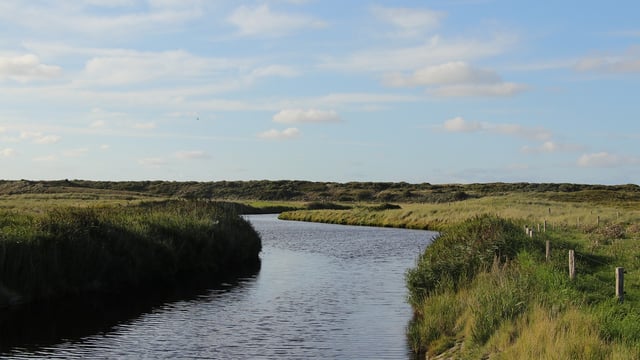EPA: 'Nitrate concentrations remain too high' in Irish waters
The latest water quality monitoring report from the Environmental Protection Agency (EPA) has cautioned that "nitrate concentrations remain too high in many parts of the country".
According to the EPA nutrient losses from agriculture "are one of the significant drivers for waters not meeting their environmental objectives under the Water Framework Directive (WFD)".
The EPA's 'Water Quality Monitoring Report on Nitrogen and Phosphorous Concentrations in Irish Waters 2024' provides an update on the results of water quality monitoring to support the assessment of the impact of the nitrates derogation on Irish waters.
This is required under Regulation 37 of the European Union (Good Agricultural Practices for the Protection of Waters) (Amendment) Regulations.
Just published it highlights that while there has been a "very welcome" recent improvement in nitrogen concentrations in Irish rivers, nutrient losses to water need to be further reduced to deliver improvements in ecological status and to achieve the WFD objectives.
According to the EPA there was a 10% national reduction in river nitrate concentrations during 2024, "with reductions observed in all regions".
The agency's analysis shows that overall nitrogen levels in rivers have reduced nationally in 2024 compared to 2023.
However the EPA added: "Overall, nitrate concentrations in the south east and midlands and eastern regions remain too high.
"The south east region has consistently had the highest nitrate concentrations over time; the annual mean concentrations in this region exceed concentrations that are likely to have a negative impact on marine water quality.
"The western and border regions have the lowest overall river nitrate concentrations".
The EPA must prepare an annual report of the results of water quality monitoring, which is used by the Department of Agriculture, Food and the Marine, and the Department of Housing, Local Government and Heritage in their evaluation of the nitrates derogation, as required by the European Commission Implementing Decision.
Ireland is seeking to retain its nitrates derogation after 2025, which allows for an excess of 170kg livestock manure nitrogen per hectare to be applied.
In preparing this report, the EPA said it has used phosphorus and nitrate data from the national water quality monitoring programme for groundwater, rivers, lakes, estuarine and coastal waters.
The assessment is based on data from monitoring stations that are representative of the impact of agriculture on water quality. Monitoring stations that also reflect the impacts of predominantly urban or industrial pressures are not included.
The EPA stated in its latest report that the most recent ecological status assessment (2016-2021) "indicates that just over half of our rivers and lakes and only 36% of our estuaries were in satisfactory ecological health, and overall water quality was in decline".
"This report finds that there has been a 10% reduction in riverine nitrate concentrations in most regions in the past year.
"There has been an 8% reduction in nitrate concentration in groundwater in the southeast region, although groundwater nitrate concentrations have not reduced in other regions.
The agency also outlined: "Lake nitrate concentrations have also reduced, but there has been a 2% increase in the number of estuarine and coastal waters exceeding the good status environmental quality standard for marine waters, when compared to last year," the agency outlined.
The EPA said that marine waters can take longer than rivers to respond to changes in nutrient levels.
"It is expected that it may take a few years before the reductions seen in rivers in 2024 are reflected in the downstream marine waters."
However the EPA also detailed: "In 2024, 38% of river monitoring stations had concentrations higher than 8 mg/l NO3, which is the level at which the ecological health of rivers and their downstream marine waters are impacted," its report said.
"19% of our estuarine and coastal waters exceeded the median winder nitrogen threshold needed to achieve good ecological status in marine waters.
"21% of groundwater monitoring sites had a mean nitrate concentration greater than 25 mg/l NO3, which is of concern because they are a significant deviation from natural conditions and are approaching the threshold where drinking water may be compromised."
According to the EPA, phosphorus concentrations in rivers are stable - with "no significant change in the last year".
"Riverine phosphorus concentrations exceeded the good status environmental quality standard in 21% of rivers, typically in areas associated with poorly draining soils," the EPA said.
"Elevated phosphorus concentrations are impacting the ecological health of these rivers and may be contributing to nutrient enrichment in the downstream estuaries."
While the recent improvement in nitrogen concentrations in rivers is "very welcome", overall, to deliver improvements in ecological status and to achieve the Water Framework Directive objectives, nutrient losses to water need to be further reduced, the EPA warned.
The agency stated: "Mitigation measures need to be targeted to the water quality issues and physical settings where they occur, i.e., the critical source areas within sub-catchments," the agency advised.
"Within a catchment, the critical source areas for phosphorus and nitrate frequently occur in different locations because they are driven by the hydrological properties of the soils.
"Measures to reduce phosphorus losses need to focus on breaking the pathway for run-off over land and measures to reduce nitrogen losses need to focus on reducing the nitrogen surplus."






